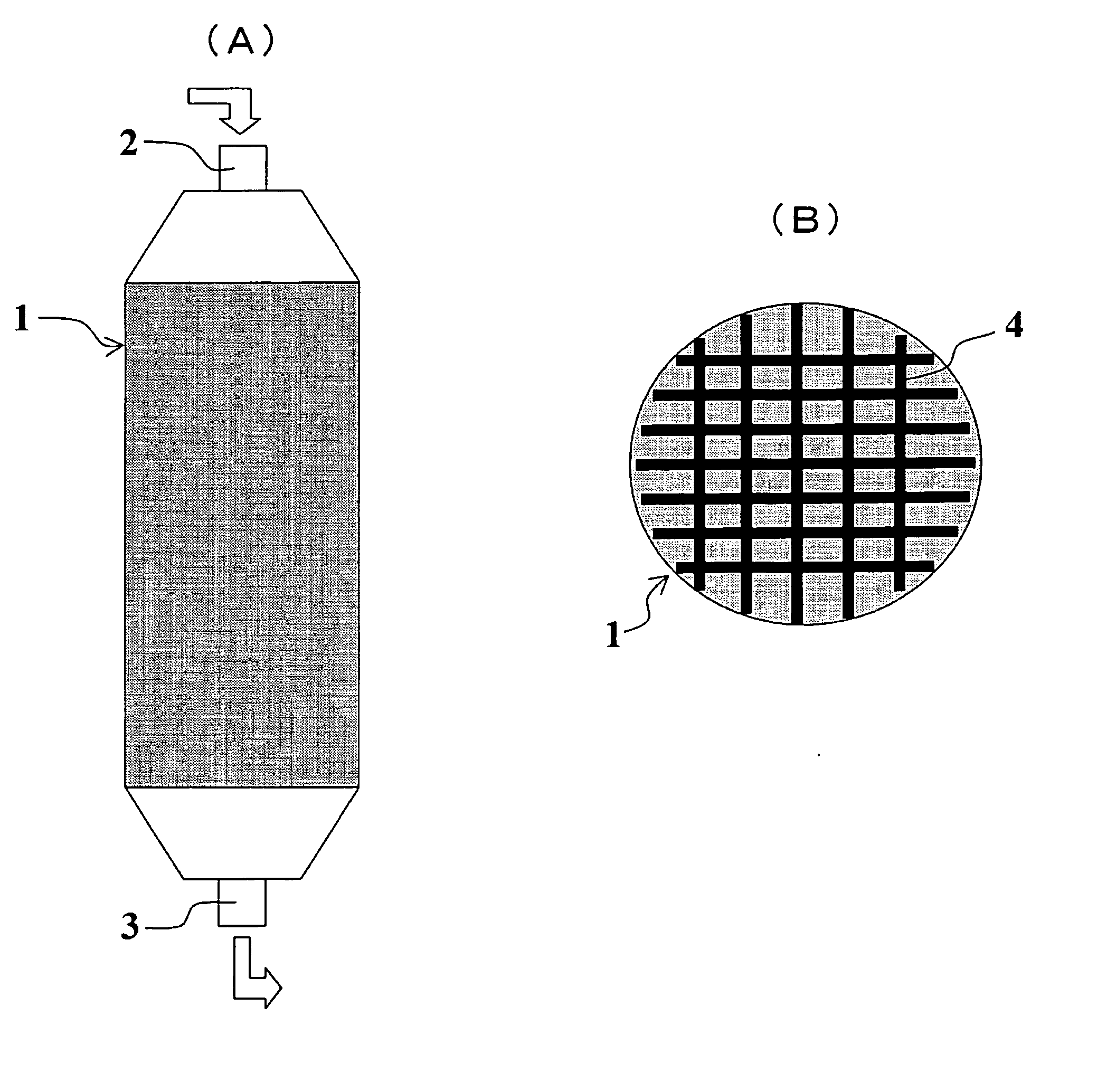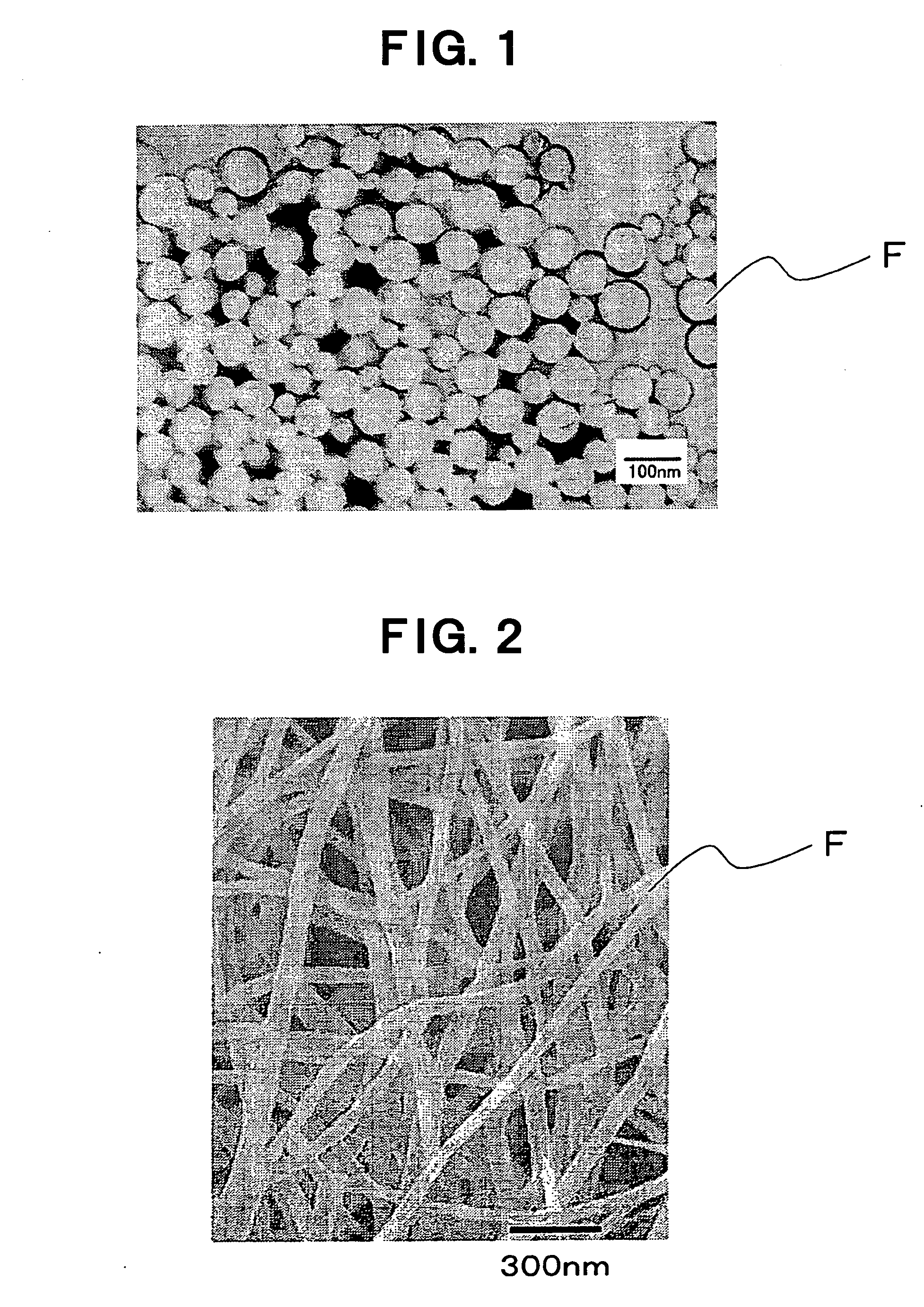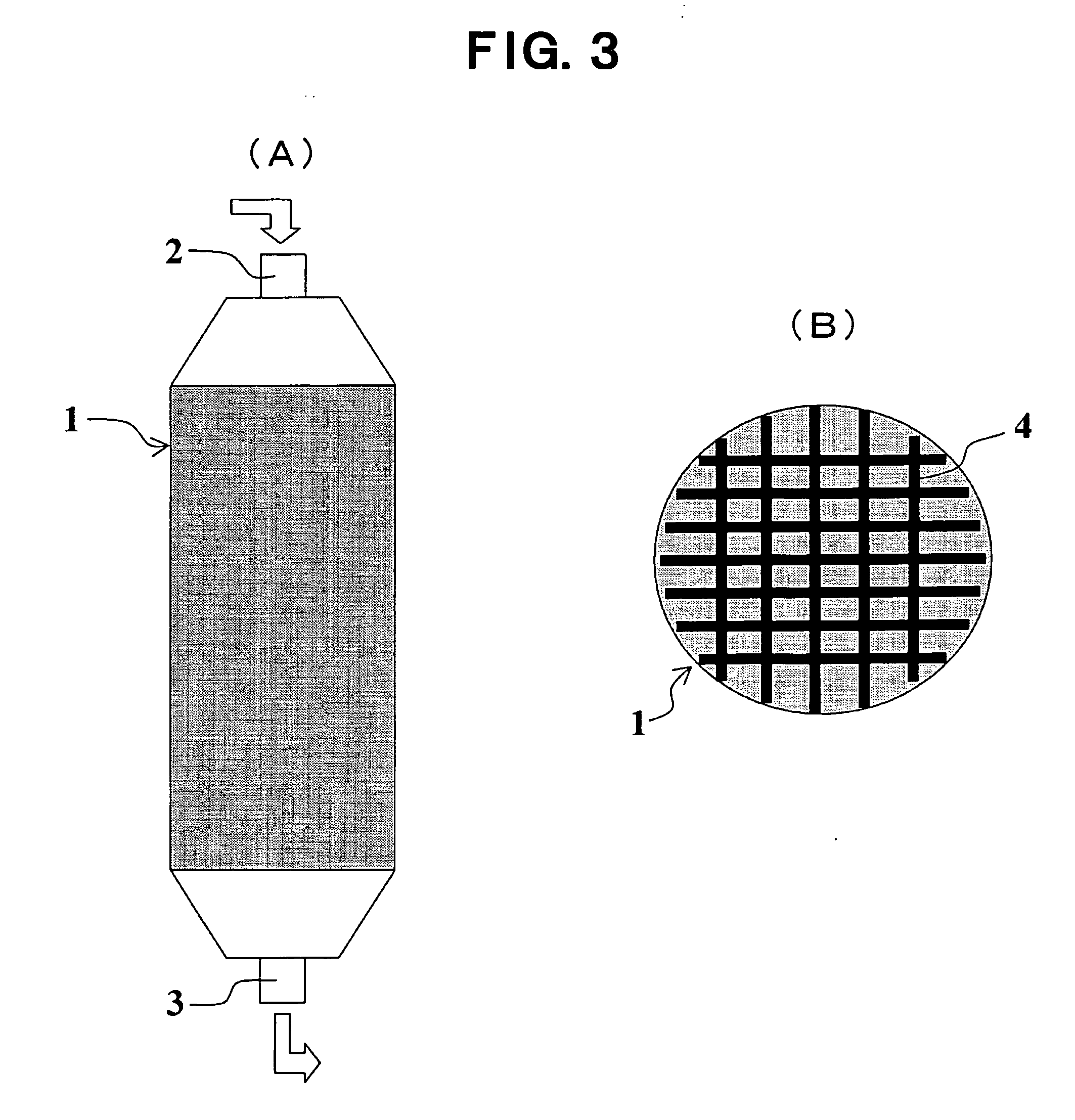Medical Filter Material, and Extracorporeal Circulation Column and Blood Filter Utilizing the Filter Material
a filter material and nanofiber technology, applied in the direction of filtration separation, other blood circulation devices, separation processes, etc., can solve the problems of low absolute strength of fibers, inability to improve the productivity of filter materials, and inability to carry out leukocyte removal uniformly in local parts of filter materials, etc., to achieve excellent hemadsorption performance, high productivity, and high strength
- Summary
- Abstract
- Description
- Claims
- Application Information
AI Technical Summary
Benefits of technology
Problems solved by technology
Method used
Image
Examples
example 1
[0128] N6 [nylon 6] (20% by weight) with a melt viscosity of 53 Pa·s (at 262° C., shear speed: 121.6 sec−1) and a melting point of 220° C. and PET [polyethylene terephthalate] copolymerized with 8 mol % isophthalic acid and 4 mol % bisphenol A with a melt viscosity of 310 Pa·s (at 262° C., shear speed: 121.6 sec−1) and a melting point of 225° C. (80% by weight) were kneaded at 260° C. by a twin-screw extruding kneader to prepare polymer alloy chips. Where, the melt viscosity at 262° C. and 121.6 sec−1 of this copolymerized PET obtained was 180 Pa·s. The kneading condition at that time was as follows. As to polymer supply, N6 and the copolymerized PET were metered separately, and supplied to the kneader separately. A screw with a diameter of 37 mm, an effective length of 1670 mm and L / D (ratio of screw part length / diameter) of 45.1 was used. A model diagram of a melt spinning apparatus used for the melt spinning is shown in FIG. 5. In FIG. 5, label 6 indicates a hopper, label 7 indic...
example 3
[0139] The filter material obtained in Example 1 was packed into a cylindrical PP (polypropylene) vessel with a diameter of 4.7 cm and a length of 17 cm at a lattice form, and an extracorporeal circulation column was made so as to form a body fluid flow parallel to the filter substrate. The schematic diagram of the lattice form was shown in FIG. 3(B). When a bovine blood was passed through this column at a flow rate of 2 mL / min. for 90 minutes, an extracorporeal circulation column having a sufficient liquid passage property without clogging could be obtained.
example 4
[0140] A PP (polypropylene) nonwoven fabric with a weight of 240 g / m2 was prepared by applying carding and wrapping to PP raw stock with a single fiber fineness of 1.9 dtex and further carrying out needle punching at a punch density of 500 / cm2. 5 g of the water dispersion of N6 nanofibers prepared in Example 1 and 20L of water were charged into a rectangular sheet machine, after made as a paper on the. PP nonwoven fabric, it was dried as it is at 110° C. using a high-temperature rotational type drier (produced by Kumagaya Riki Kogyo Corporation), thereby obtaining a medical filter material in which N6 nanofibers were dispersed on the PP nonwoven fabric in a net-like form. The weight of this medical filter material was 240 g / m2, and the apparent density thereof was 0.02 g / m3.
[0141] Only N6 nanofibers were taken out from the obtained filter material, and as the result of analyzing in the same manner as that in Example 1, the number average diameter of the nanofibers was 56 nm which w...
PUM
| Property | Measurement | Unit |
|---|---|---|
| Fraction | aaaaa | aaaaa |
| Diameter | aaaaa | aaaaa |
| Diameter | aaaaa | aaaaa |
Abstract
Description
Claims
Application Information
 Login to View More
Login to View More - R&D
- Intellectual Property
- Life Sciences
- Materials
- Tech Scout
- Unparalleled Data Quality
- Higher Quality Content
- 60% Fewer Hallucinations
Browse by: Latest US Patents, China's latest patents, Technical Efficacy Thesaurus, Application Domain, Technology Topic, Popular Technical Reports.
© 2025 PatSnap. All rights reserved.Legal|Privacy policy|Modern Slavery Act Transparency Statement|Sitemap|About US| Contact US: help@patsnap.com



